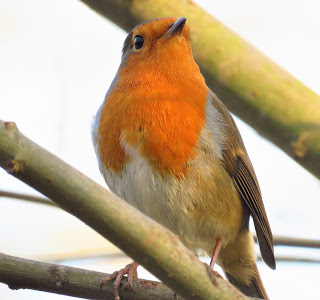Here is a pair of Teal, drake closest to us. Not at all sure why there seems to be a blue area below the horizontal black line along the flank of the drake: its is where the speculum might be visible, but on Teal that should be green, not blue. Now look again at the head pattern and feather detail of the drake, remember and ....
... then look at this scruffy bird. The same head pattern is faintly there and there are a few body feathers with the drake-type markings. I assume this is a first-winter bird just acquiring its first adult plumage. Could be a retarded bird I suppose – don’t know much about such occurrences. Whatever: its speculum is certainly green.
“Which way are the fish?” Cormorants look for inspiration. Great feather patterns.
From this angle we can see just how ‘hooked’ the end of the upper mandible is.
There are usually Great Spotted Woodpeckers around. Not often too cooperative. One playing peek-a-boo here.
‘Nice red blue-jeans’. A female without any red on the nape.
At a feeder but worth including for a number of points. Obviously a female from this angle. Note the powerful claws and the way even sideways on (and no: I have not rotated the photo) it uses its strong pointed tail-feathers as a prop.
All we need is some snow and we could make a Christmas Card.
Note the grey between the red breast and the brown back. Note also the pale brown tips to the inner primary-covert and all the greater-coverts.
A fine male Chaffinch. Not often noticed amongst all the subtle colours is the almost lime green on the rump.
A more usual portrait. Note the blue-grey shawl and black across the top of the bill.
(Ed Wilson)




















